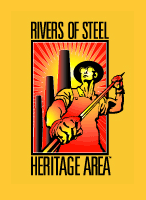Neighborhoods shown in Homestead exhibit
Published: Wednesday, August 27, 2008
Updated: Wednesday, August 27, 2008
Located on Homestead’s Eighth Avenue is a national historic landmark operated by the Rivers of Steel National Heritage Area. Known as the Bost building, it was built as a hotel in the late 19th century and served as the headquarters of striking steelworkers during the Homestead Strike in 1892.
But today, it is home to a regional museum that recently opened a new exhibit entitled, “Seeing Pittsburgh.”
Since it opened to the public on July 9, Seeing Pittsburgh has featured photographs, artwork and audio recordings from 11 different Pittsburgh neighborhoods.
“This actually evolved over a number of years of really observing those small and very interesting and often topographically defined neighborhoods in the city,” said Ron Baraff, director of museum collections and archives at Rivers of Steel.
Baraff, along with co-organizer Tiffani Emig, said they thought about including Oakland in the exhibit, but it just didn’t work out.
“We picked certain types of communities that we really wanted, and once we were able to get into those communities, we had to follow that path,” he said.
They wanted to profile post-industrial and industrial neighborhoods, white-collar suburbs and blue-collar suburbs as well as neighborhoods that had remained “fairly constant” throughout the years, he said.
Once they decided on the 11 types of neighborhoods they wanted to profile, Baraff and Emig approached community groups in each neighborhood to find photographers.
“We didn’t want to pick the photographers, what we wanted to do was to have the community decide who should be involved,” said Baraff.
Stephen Grebinski, a Pitt senior living in Squirrel Hill, was one of the 44 photographers who contributed to the project.
Grebinski said he learned of Rivers of Steel in an architectural preservation class he was taking and started work on the project in February or March.
It took about three weeks of going through old photos and taking new ones for him to finish his part of the project.
“I just submitted some stuff., I wasn’t sure what they were looking for,” said Grebinski.
Grebinski, like the other photographers, had to fill out a log explaining his entries. This included what the photo was of and how it represented the photographer’s neighborhood.
Grebinski’s photo of a gate in a chain-link fence made it into the Squirrel Hill portion of the exhibit. He said the photo represents how people have such small yards in Squirrel Hill that they feel the need to put up a fence and cherish it.
“I wish it was deeper than that, but it’s not,” said Grebinski.
He said he’s participated in photo exhibitions before, but never in this way.
“I haven’t really collaborated with some giant group organization [before], and I kind of liked it.”
Admission to the Bost building is free to the public, and the Seeing Pittsburgh exhibit will remain there until Jan.31, but the Bost building is not its final stop. Baraff wants to take the exhibit around to different neighborhoods in Pittsburgh.
“What we hope is that this becomes much more of an open-ended project and that other communities want to be involved,” said Baraff.
A book is being released to coincide with the exhibit, and Rivers of Steel is also involved in creating a series of cellphone tours for neighborhoods in the Pittsburgh area.
“We want [Pittsburghers] to understand themselves a little better, to understand their neighbors a little better,” said Baraff.


No comments:
Post a Comment